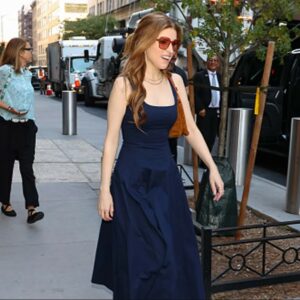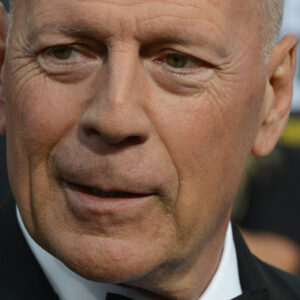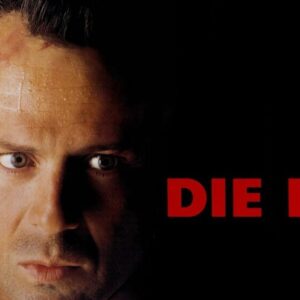When it comes to the history of R&B and hip-hop, few names shine brighter than Mary J. Blige. Over the past three decades, she has left an indelible mark on the music industry—not just through her soul-stirring voice and emotional depth but through her music videos that have defined an era. Blige has always been a storyteller, and her music videos became more than mere promotional tools—they were visual narratives that amplified her message. Through her videos, Blige expressed not just her pain, joy, and resilience but also brought an iconic style to the forefront, blending fashion and narrative in a way that influenced generations of artists.
Thesis: Mary J. Blige’s music videos set new trends in visual storytelling, combining her powerful voice with equally compelling imagery. Her fusion of fashion, emotion, and narrative structure within her videos helped define a visual language for future R&B and hip-hop artists, making her an undeniable trendsetter in the industry.
Context: Blige burst onto the scene in the early ’90s with her unique blend of R&B, hip-hop, and soul, establishing herself as the “Queen of Hip-Hop Soul.” Her musical prowess was undeniable, but it was her music videos that set her apart from her peers. Unlike other artists of the time, Blige’s videos weren’t just aesthetic backdrops; they were layered with storytelling, emotion, and visual metaphors that made her message even more potent. As a trailblazer, Blige’s impact on the genre transcended music, influencing fashion, culture, and the way female artists could present themselves visually.
Section 1: The Early Influence of Mary J. Blige’s Videos
Mary J. Blige’s early music videos—such as “Real Love” and “Not Gon’ Cry”—were revolutionary in their raw emotion and relatable storytelling. At a time when many artists leaned heavily into stylized, often fantastical depictions of love and heartbreak, Blige brought something different: authenticity. She laid bare her struggles, presenting herself as both strong and vulnerable. This combination of real-life pain and resilience resonated deeply with fans, particularly those who saw their own lives reflected in her music.
In “Real Love”, released in 1992, Blige set the tone for her signature style, blending street fashion—oversized jackets, hoop earrings, and baseball caps—with emotional vulnerability. The video depicted Blige as a woman looking for genuine connection amid the noise of everyday life. It was a simple concept but carried profound emotional weight. Similarly, “Not Gon’ Cry” (1996) was a dramatic and heart-wrenching portrayal of a woman at the end of a broken relationship. The video’s stripped-back visuals allowed Blige’s raw emotion to take center stage, making it clear that she was not just a singer but a storyteller. These early videos influenced not only future R&B artists but also the broader world of hip-hop, where storytelling in music videos became increasingly central.
Blige’s ability to connect emotionally with her audience through these videos was a significant departure from the highly polished, often disconnected visuals that dominated the early ’90s. She brought the streets into her storytelling, and by doing so, made her narratives both personal and universal. This style would influence future R&B and hip-hop visuals, inspiring a more grounded and emotionally resonant approach to music videos.
Section 2: Pioneering the Use of Fashion in Music Videos
Fashion played a central role in Mary J. Blige’s music videos, serving not just as a visual element but as a form of self-expression and empowerment. Blige fused high fashion with urban streetwear, creating a unique aesthetic that became emblematic of ’90s R&B. Her style was unapologetically bold, and in a genre dominated by male voices, she made it clear that women could own their power both musically and visually.
Blige’s influence on fashion extended beyond her own wardrobe. She helped define the look of an era, with many artists adopting her blend of luxury and street style. Her iconic looks—from fur coats and thigh-high boots to oversized sunglasses—became staples of music video fashion. Blige’s fusion of glamour and grit symbolized her personal journey from the projects of Yonkers to international stardom, and her style was a reflection of that evolution.
In music videos like “Family Affair” (2001), Blige continued to push the boundaries of fashion, sporting sleek, high-end designs while maintaining the essence of her streetwear roots. The juxtaposition of these two worlds created a visual identity that resonated with fans and inspired future generations of artists. Blige showed that fashion in music videos wasn’t just about looking good—it was about telling a story, conveying a message of empowerment and self-worth.
This fusion of fashion and storytelling would go on to influence countless artists, particularly women in R&B and hip-hop. From Beyoncé to Rihanna, the visual language that Blige helped create can still be seen in the music videos of today’s biggest stars.
Section 3: Empowering Women Through Visuals
One of Mary J. Blige’s most enduring contributions to music video history is her portrayal of powerful, independent women. In a genre that often objectified women or relegated them to secondary roles, Blige flipped the script. Her music videos showcased women who were strong, self-assured, and emotionally complex. Whether she was singing about heartbreak, survival, or triumph, Blige’s videos depicted women as the center of their own narratives, not as side characters in a male-dominated world.
Videos like “Be Happy” (1994) and “Just Fine” (2007) exemplify this empowerment. In “Be Happy”, Blige sings about the universal desire for contentment, and the video portrays her as both vulnerable and strong—struggling to find peace but determined to do so on her own terms. In “Just Fine”, Blige exudes confidence and self-assurance, presenting a woman who has overcome her struggles and emerged stronger for it.
Blige’s videos also challenged traditional gender roles within hip-hop and R&B. While many male artists of the time used their videos to assert dominance or control, Blige’s visuals celebrated female independence and emotional depth. Her portrayal of women as multifaceted individuals—capable of being strong, vulnerable, joyful, and heartbroken—resonated with a generation of female listeners who saw themselves in her music.
This empowerment extended beyond her own music. Blige’s influence can be seen in the work of artists like Alicia Keys, Beyoncé, and H.E.R., who have continued to push the boundaries of how women are represented in music videos. By centering women in her narratives and refusing to conform to traditional expectations, Blige helped pave the way for future generations of female artists.
Section 4: Cinematic Storytelling in Music Videos
Mary J. Blige’s music videos have always been about more than just aesthetics—they are mini-movies that tell a story. Throughout her career, Blige has worked with some of the most talented directors in the industry, using their cinematic vision to bring her music to life. From the gritty realism of “Not Gon’ Cry” to the vibrant, celebratory visuals of “Family Affair”, Blige’s videos have always had a narrative arc that reflects the themes of her music.
One of the key elements of Blige’s storytelling is her ability to convey personal struggles and triumphs visually. In the video for “No More Drama” (2001), Blige uses dramatic imagery to depict the emotional and psychological battles she has faced in her life. The video is a powerful reflection of the song’s themes of overcoming adversity and finding peace, with Blige’s performance adding an extra layer of emotional depth.
Blige’s collaboration with directors like Hype Williams and Marcus Raboy helped elevate the art of the music video, bringing a cinematic quality to the medium that was rare at the time. These directors understood Blige’s vision and helped create visuals that matched the intensity of her music. Their work together has influenced a more narrative-driven approach to modern music videos, where storytelling is just as important as the music itself.
This cinematic approach to music videos has become a standard in the industry, with artists like Kendrick Lamar, Drake, and Beyoncé adopting similar techniques in their own work. Blige’s influence can be seen in the way these artists use visuals to tell stories that enhance the emotional impact of their music.
Section 5: Influence on Future Generations of Artists
Mary J. Blige’s visual storytelling has had a profound impact on future generations of artists. Younger artists like Beyoncé, Rihanna, and H.E.R. have taken cues from Blige’s ability to fuse fashion, narrative, and emotion in their music videos. These artists have built on Blige’s legacy, pushing the boundaries of what music videos can be while paying homage to the trail she blazed.
Beyoncé, in particular, has cited Blige as a major influence on her own visual work. From the raw emotion of “Lemonade” to the high fashion of “Formation”, Beyoncé’s music videos reflect many of the same elements that defined Blige’s early work. Similarly, Rihanna’s ability to blend fashion and storytelling in videos like “We Found Love” and “Needed Me” echoes Blige’s influence.
H.E.R., another rising star in R&B, has also followed in Blige’s footsteps, using her music videos to tell deeply personal stories. In videos like “Hard Place” and “I Can’t Breathe”, H.E.R. combines Blige’s raw emotional honesty with her own unique perspective, creating visuals that resonate with a new generation of listeners.





